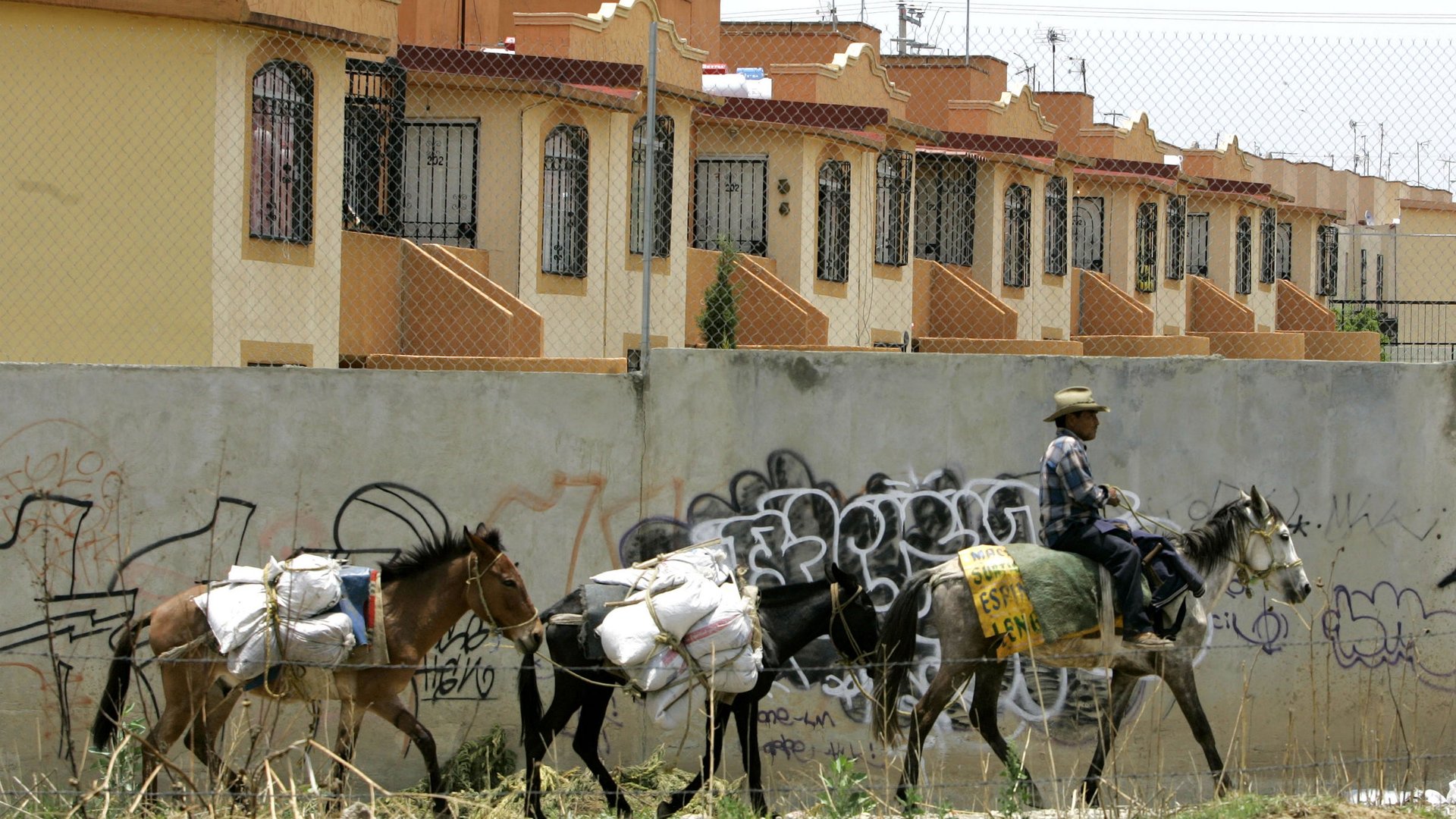Mexico’s biggest homebuilder now relies on cash from building prisons
Some of the smartest investors in the world have been talking up Mexico in recent months. And retail investments have been following suit. For instance on its recent earnings call, ETF giant BlackRock repeatedly mentioned that Mexico was sucking in a larger amount of investor money than usual during the last quarter. “We saw huge investing in Mexico,” said Larry Fink, the chief executive of the asset management giant.


Some of the smartest investors in the world have been talking up Mexico in recent months. And retail investments have been following suit. For instance on its recent earnings call, ETF giant BlackRock repeatedly mentioned that Mexico was sucking in a larger amount of investor money than usual during the last quarter. “We saw huge investing in Mexico,” said Larry Fink, the chief executive of the asset management giant.
But before they dump their entire retirement into Mexico, perhaps those retail investors should look take a closer look at this story highlighting the dire straits facing Mexico’s residential construction sector. The country’s largest mortgage originator—a government controlled entity that is essentially Mexico’s Freddie Mac—says that repossessions have more than doubled over the last year. And the corrosion in the residential real estate market has left Mexico’s most-important homebuilders staring default in the face. Mexicali-based homebuilder Urbi Desarrollos Urbanos SAB missed a payment on debt last month, as did Mexico City’s GEO SAB. Mexico’s largest homebuilder by revenue, Desarrolladora Homex SAB, is now desperately trying to avoid doing the same. It recently sold off interests in prison projects in the Mexican states of Morelos and Chiapas, generating roughly 4 billion pesos (about $330 million). The financial services group controlled by the world’s richest man, Mexican telecommunications magnate Carlos Slim, was one of the buyers. The homebuilder said it will use half of that amount for working capital for its homebuilding division and half to pay down debt, of which it had about 21.47 billion pesos at the end of March.
So what’s gone so wrong with Mexico’s housing industry? Economists expect economic growth in the country to clock in at a respectable 3.6% in 2013. And unemployment remains quite low, at around 4.5% at the end of March. Part of the problem is politics. Mexico’s mortgage market is dominated by entities such as Infonavit—Instituto del Fondo Nacional de la Vivienda para los Trabajadores—which was created by the Mexican government in 1972 to help finance low-income housing for workers. While not explicitly guaranteed by the government, Infonavit is viewed by the markets as effectively being an arm of the government. And its decisions on loans are thought to reflect government policy.
And recently—with the election of President Enrique Nieto Peña—government policy seems to have swerved somewhat sharply. In February Nieto Peña laid out a plan in which government housing subsidies would push people to purchase so-called “vertical housing” in city centers. That’s a problem for Mexican homebuilders who have been building up large banks of land on the dusty outskirts of Mexican cities, where much of the development has been centered over the last decade. And, while the details are sketchy, the thinking is that those banks of land are going to be a lot less valuable now. Meanwhile, Infonavit has apparently channeled more of its lending toward sales of existing homes, rather than the new houses homebuilders have been speculatively churning out, leaving them with growing inventories, according to Fitch Ratings. So is a bailout coming for the housing sector? Well, some say one has already happened, when the government agreed to pay for as much as 30% of the losses banks suffer as a result of lending to homebuilders. So keep that in mind next time you hear someone extolling the near-perfect state of the Mexican economy.